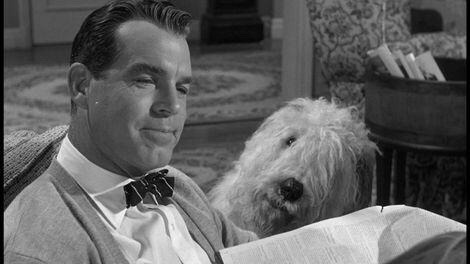
Slob with a blog. Vicariously join me on my movie viewing adventures! Visit my blog here: http://jinglebonesmovietime.blogspot.com
297 posts
JOKER (Dir: Todd Phillips, 2019).

JOKER (Dir: Todd Phillips, 2019).
Joaquin Phoenix stars in Todd Phillips much anticipated movie based on the DC comic book villain the Joker.
Set in a pre-Batman Gotham City, Joker charts the descent into madness of failed comedian Arthur Fleck (Phoenix). Fleck bears a depressing, isolated existence, working as a clown-for-hire by day and caring for his elderly mother by night. Fired from his job and suffering a beating at the hands of Wayne Enterprises employees Fleck turns vigilante on those who those he feels have wronged him, while desperately trying to find acceptance in an uncaring society, ultimately becoming his alter ego Joker.
Joker has divided critics and audiences and I can see why.
Director Phillips found fame with comedy movies Old School (2003) and The Hangover (2009), but his Joker is anything but funny. In many respects it is a love letter to 70s cinema; paying homage, in particular, to the work of Martin Scorsese, notably Taxi Driver (1976) and King of Comedy (1983) and Paddy Chayefsky’s dark media satire Network (Sidney Lumet, 1976). Borrowing its themes and visual style from those movies, Joker could be accused of being derivative, but it certainly is a handsome production; its gritty 70s milieu is arguably its strong suit.
Phoenix’s central performance is undoubtedly powerful and very intense. Many will acclaim this while others, myself included, may find it a little overwrought and lacking subtlety. By contrast, the surprisingly low-key performance by Robert De Niro, as a late night talk show host, is one of his best in recent years. Zazie Beetz, in a relatively small but important role as Fleck’s neighbour was the standout among the cast for me.
Much controversy has arisen over the glorification of violence in the movie. Yes, it is brutal in places but I feel this is inevitable in a DC origins movie about a deeply disturbed, complex character. This is no PG13 or 12A superhero movie. Take heed of the rating, it is a relentlessly dark and very distressing movie and is definitely not suitable for children or young teens. This is a movie whose lead character is suffering mental illness and this was my major problem with Joker. I understand the movie’s conceit that Fleck is the manifestation and result of an unfeeling, disinterested society. However, I feel very uneasy about how mental health is paraded as entertainment and found its depiction here both cruel and potentially damaging.
I wanted to love Joker but I didn’t. I don’t wish to discourage anyone else from watching the movie; this review represents my personal opinion. This may well be a movie that you enjoy as others at the screening I attended obviously did. For me both the handling of the theme and Phoenix's performance were lacking in sensitivity and bordering on the offensive. A disturbing and unsettling viewing experience that I would have difficulty recommending.
100+ movie reviews now available on my blog: JINGLE BONES MOVIE TIME! Link below.
-
 cannibalgh0st liked this · 6 years ago
cannibalgh0st liked this · 6 years ago
More Posts from Jingle-bones




のりさんのツイート: “あった!!!全人類私の人生で最もロマンチックだった瞬間の写真見て… ” https://twitter.com/_nollipop_/status/981671618890969088

FATHER BROWN aka THE DETECTIVE (Dir: Robert Hamer, 1954).
The second big screen outing for G K Chesterton's fictional detective Father Brown, adapted from his 1910 short story The Blue Cross.
Roman Catholic priest and amateur detective Father Brown (Alec Guinness) pits his wits against elusive master criminal Flambeau (Peter Finch), intent on stealing a priceless cross from the clergyman.
Originally exhibited in the UK as Father Brown, the movie is now more widely available in prints bearing its US title The Detective. A glance at Father Brown’ s cast and crew and one would be forgiven for thinking this Columbia Pictures release was an Ealing Studios production. Director Hamer is reunited with his Kind Hearts and Coronets (1949) stars Alec Guinness and Joan Greenwood, whilst Ealing alumni Peter Finch, Bernard Lee, Sidney James and Cecil Parker all feature. However, any similarity between this lightly humorous detective story and an Ealing comedy ends here.
Languishing part way between comedy and mystery, the movie straddles both genres without a firm footing in either. Never reaching the witty heights of Kind Hearts and Coronets and not quite exciting enough to convince as a thriller. It ambles along nicely enough but lacks the narrative twists and turns that would have elevated the story above the mundane. Thelma Schnee and Hamer's screenplay never quite manages to over come the source material's inherent quaintness and at times threatens to become unbearably twee.
Alec Guinness is excellent as ever here, once again immersing himself chameleon like in the role of Brown. He is matched by the equally impressive Finch in a rare comedic performance for the actor, albeit not one especially played for big laughs. The rest of cast are, unfortunately, somewhat underused in what is largely a two-hander between Guinness and Finch.
Father Brown is good movie, but can't help but feel a little bit of a disappointment considering the talent involved. It is still worth a watch, if only for the excellent performances from its leading men. Not quite a classic, but a high quality time passer nonetheless.
Check out my blog JINGLE BONES MOVIE TIME for a longer review of Father Brown. Link below.

ONE HUNDRED AND ONE DALMATIANS (Dir: Wolfgang Reitherman, Hamilton S Luske & Clyde Geronimi, 1961).
Walt Disney's classic animated feature based upon Dodie Smith's novel The Hundred and One Dalmatians.
One Hundred and One Dalmatians tells the story of dalmatians Pongo (Rod Taylor) and Perdita (Cate Bauer), whose 15 puppies are stolen by the evil Cruella de Vil (Betty Lou Gerson). With the help of cohorts Horace and Jasper, Cruella intends to turn these and 84 additional pups into spotty dog skin coats. Utilising the ingenious Twilight Bark dog social network, Pongo and Perdita track their offspring to Cruella's abandoned Hell Hall country estate and embark on a daring rescue.
With it's impressionist background art and loose, stylistic approach to character design ...Dalmatians was Disney's most stylish and contemporary animation to date. Nearly sixty years after release it's highly graphic Mid-century modern stylings are as fresh and appealing as ever. In fact it's difficult to recall any other animated feature with such a dramatic and arresting visual style. In particular, praise must be given to beautiful rendering of early 1960s London; effortlessly capturing the spirit and atmosphere of the city and it's surrounding countryside.
Matching the impressive visuals is an exceptionally well realised screenplay by Bill Peet. One Hundred and One Dalmatians is an expertly crafted thriller, tightly plotted and exciting while remaining lighthearted and extremely witty. It is populated by a fantastic cast of characters, not least Cruella de Vil, possibly the greatest of all Disney villains. Clean-cut canine leads Pongo and Perdita are both heroic and charming and audiences will have no trouble identifying with the parental pooches on their daring quest to rescue the stolen pups.
One Hundred and One Dalmatians easily ranks among the greatest of Walt Disney's many significant achievements. Its beautiful visuals, flawless storytelling, top notch vocal work and fantastic music combine to make ...Dalmatians a masterpiece of movie making.
Check out my blog JINGLE BONES MOVIE TIME for a longer, more in-depth review of One Hundred and One Dalmatians! Link below.

THE LION KING (Dir: Roger Allers & Rob Minkoff).
The 1990s Disney Animation renaissance continued with The Lion King, their biggest hit (when adjusted for inflation) to date.
The movie tells the story of young lion and future king Simba (voiced by Jonathan Taylor Thomas as a juvenile and Matthew Broderick as an adult). Simba’s father Mufasa (James Earl Jones) is killed by his brother and Simba’s uncle Scar (Jeremy Irons). Scar leads Simba to be believe he is responsible for Mufasa’s death and goes into hiding. Believing Simba has been killed by Hyenas, Scar takes his place as king of the Pride Lands. However, Simba is rescued by comic relief duo meerkat Timon (Nathan Lane) and warthog Pumbaa (Ernie Sabella). When adult Simba learns of his uncle’s despotic machinations he returns to fight Scar, reclaim his crown and restore order to the Pride Lands.
Majestic seems a fitting word for The Lion King. Recalling earlier classic The Jungle Book (Wolfgang Reitherman, 1967) with its animal cast, particularly in the characterisation of Scar, a upper-crust Disney villain in the Sheer Khan mode. The movie feels both fresh, in its break from the fairytale genre, yet classic Disney with its anthropomorphised animal antics.
It is easily one of the Studio’s most visually appealing features of the 1990s. It’s beautiful backgrounds of African landscapes is the match of the superior character animation. This is highlighted particularly in the opening scene as the African animal populous gathers to welcome the newly born Simba to the Pride Lands. So impressed were the Disney execs by this scene, that it was used wholesale as the movie’s trailer. Happily the rest of the film has no problem in living up to this breathtaking beginning.
With outstanding animation, excellent voice work and a handful of hit songs by Tim Rice and Elton John, The Lion King reigns as one of Disney’s greatest post-Walt animated feature films.
Visit my blog JINGLE BONES MOVIE TIME for a longer, more in-depth review of The Lion King. Link in bio.


THE SHAGGY DOG (Dir: Charles Barton, 1959).
Walt Disney's first live-action comedy movie, suggested by 'Bambi' author Felix Salten's novel 'The Hound of Florence'.
Wilby Daniels (Tommy Kirk) discovers an ancient Borgian ring which magically transforms him into a shaggy Bratislavian sheepdog. Unfortunately for Wilby he has no control over when or where he will change. Also unfortunate is Wilby's father (Fred MacMurray) is a dog hating postman! As if this wasn't problem enough, Wilby is soon mixed up with Russian spies in what is undoubtedly one of the oddest concepts for a movie of all time!
Two years before the release of The Shaggy Dog, the Disney Studios scored a massive hit with Old Yeller (Robert Stevenson, 1957). This set the standard for a series of boy and dog movies such as Big Red (Norman Tokar, 1962) and The Biscuit Eater (Vincent McEveety, 1972). On the surface The Shaggy Dog might appear to be another boy and dog movie but the twist here is that the boy IS the dog. This weird set up was a welcome riposte to horror movie I Was a Teenage Werewolf (Gene Fowler Jr, 1957) and set the template for the seemingly endless steam of kooky comedies released by Disney for the next two decades.
Fresh from Old Yeller, Tommy Kirk was one of Disney's most appealing juvenile stars and here shows a knack for quirky comedy. MacMurray too, though a highly capable dramatic actor, had a flair for light comedy.
The plot is ludicrous, certainly, but it is very funny. Much of the humour comes from sight gags such as the dog putting on pyjamas and cleaning his teeth. Honestly, there is little I find funnier that a sheepdog driving a hot rod! The pre CGI effects that allow Wilby to turn canine are neat, low tech but effective.
The Shaggy Dog would eventually make over $12 million at the US box office, a massive return on an investment of around $1 million and 60 years after its original release has lost little of its peculiar charm. Disney comedies were notorious for their reliance on formula. Here the formula still feels fresh. It may not be high art but it is highly entertaining.
On a side note, the movie was computer colorized in 1986. While I highly recommend this enjoyable shaggy dog story I would implore you to watch it in its original beautiful black and white.
Check out my blog JINGLE BONES MOVIE TIME for more reviews of vintage Disney classics! Link below.